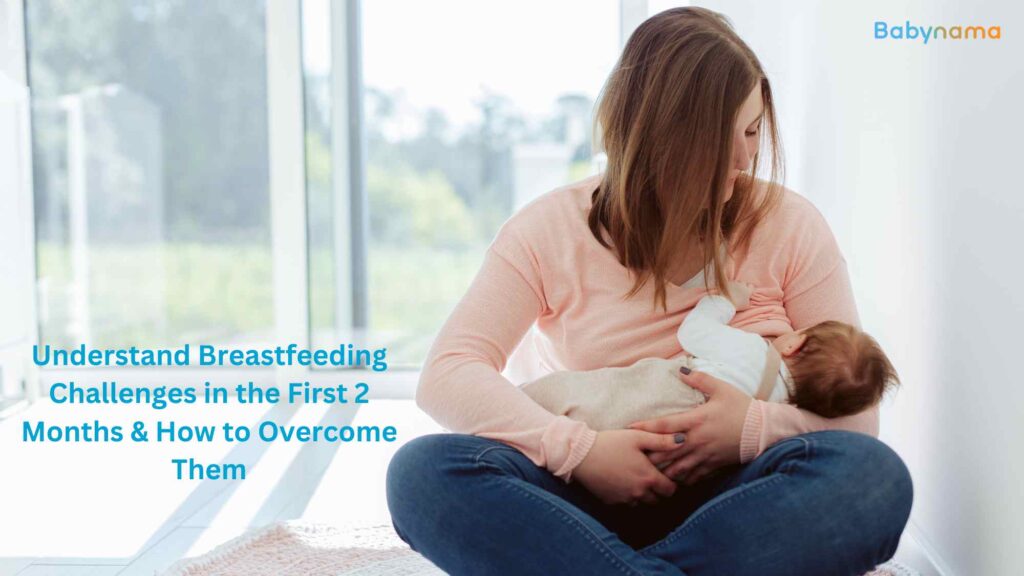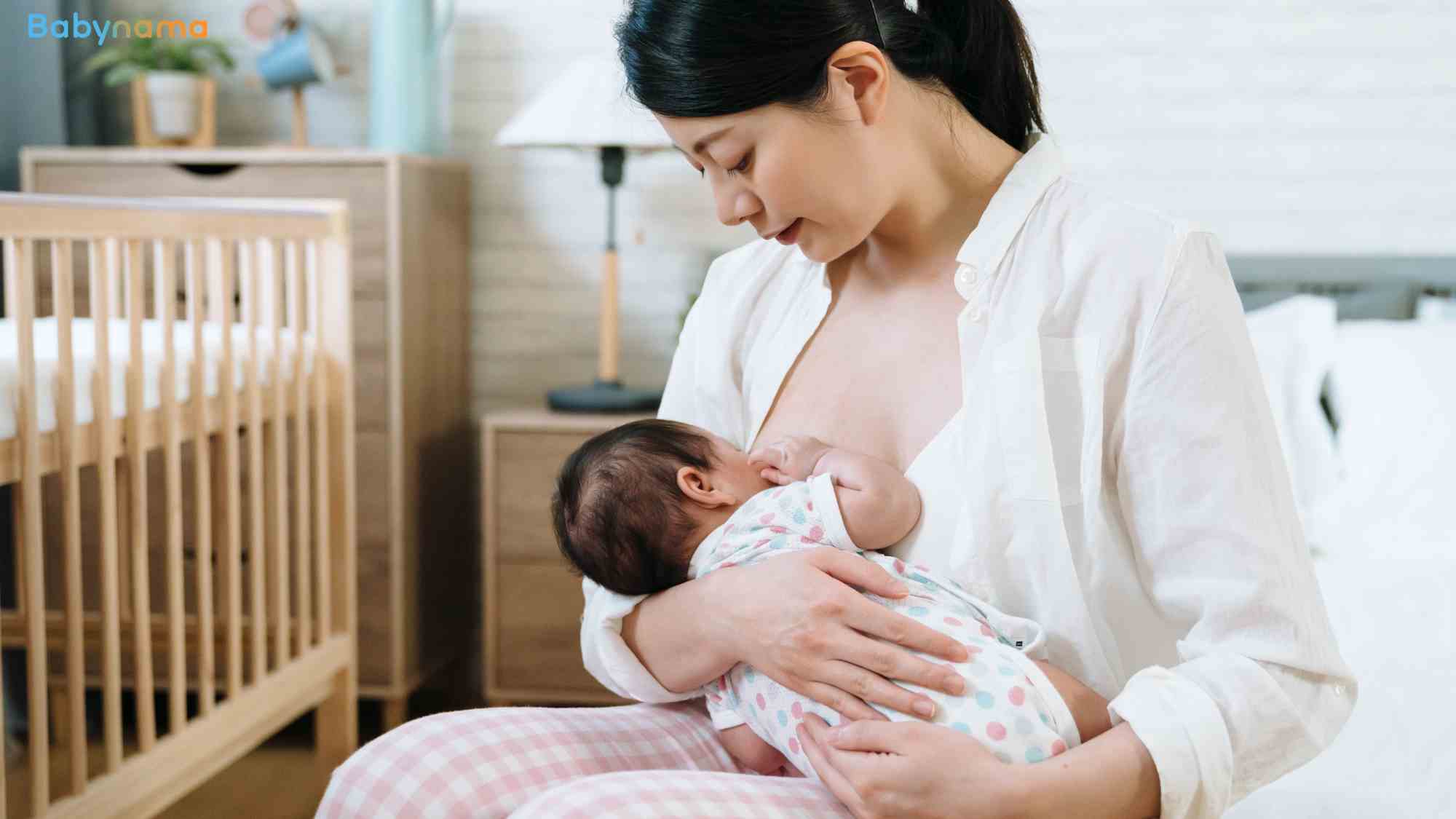Breastfeeding is a wonderful adventure that offers many learning opportunities, while some mothers and babies may encounter some difficulties during the first few months. It takes time and practice for it to feel instinctive for both of you. Tackling breastfeeding challenges now means you’ve got a better chance of establishing a good milk supply and continuing breastfeeding for longer. Here are some of the tips on how to overcome the most common breastfeeding difficulties mums experience from the end of the first week to the end of the second month.

Painful lump in breast
There are various reasons for lumps and bumps in a lactating breast. One of the most common is a blocked duct, clogged by milk, causing a hard lump that may be sore and tender. Below are some of the possible solutions:
- Massage the affected area, especially when feeding or expressing, to help release the blockage.
- To reduce the discomfort, try taking a warm bath or shower before feeding, or gently rub a warm flannel against your breast.
- To reduce the chance of milk accumulation, which might result in mastitis, continue breastfeeding as usual.
- Try pumping from the affected breast after feeds to ensure good milk drainage and to help remove the blockage, allowing the duct to work again.
- See your healthcare professional/ Pediatrician if you notice signs of infection (a red, painful breast, or flu-like symptoms such as a high temperature, aches and pains, or headache), or you think the lump isn’t related to breastfeeding.
Breasts are red and having a painful sensation
If one or both of your breasts are red and painful, and it isn’t a blocked duct, it’s likely you have mastitis. This is a condition where the breast tissue becomes inflamed. Signs include a red and hot area, tenderness, flu-like symptoms—being hot and cold with aching joints—and a temperature of more than 38.5 °C. If you’re experiencing these symptoms, seek medical advice right away.
The causes of mastitis can be:
- an untreated blocked duct
- bacteria that have entered you breast via cracked or damaged nipples
- poor attachment to the breast
- leaving long periods of time between feeds
- having breasts that are too full
- wearing a bra or clothing that is too tight and ‘cuts in’ to your skin
- an oversupply of milk
In addition to seeking medical advice, you can also try the following self-care tips:
- Take paracetamol or ibuprofen (not aspirin) to relieve the pain, as instructed on the packet or by a pharmacist.
- Keep breastfeeding or pumping frequently. Your milk is still safe for your baby to drink. Flowing milk will help clear any blockage and prevent further painful buildup. Stopping suddenly could exacerbate symptoms. You may need to express any leftover milk after feeds.
- Offer your baby the affected breast first. This may help your baby to drain it adequately. If this is too painful, start on the non-affected side to get the milk flowing, then switch.
- Rest, drink and eat well. Make sure you’re having plenty of fluids and eating nutritious foods.
- Massage the area in a warm bath or shower, or compress with a warm flannel or heat pack to help release the blockage and ease symptoms before feeding or expressing.
- Use a cool pack after feeds to reduce inflammation.
You’re feeling exhausted
Breastfeeding can feel tiring and relentless at times during the first weeks. Your baby will likely be feeding every few hours, day and night, while you’re still recovering from the birth.
- Take care of yourself. Get as much sleep as you can, try to eat regularly and healthily, and drink lots of water—even if it might be easier said than done when you have a newborn. Seek assistance from friends, family, and your partner; if you can afford it, get hired assistance as well.
- Lay down to feed. In addition to relieving pressure on any uncomfortable areas, stitches, or cesarean scars, this may feel more soothing.
Your breasts might be lopsided
You may find your baby prefers to latch on one side, or that one breast produces more milk than the other, which could make them different in size or shape. This is very common and shouldn’t cause any problems when breastfeeding. If it’s not bothering you or your baby, there’s no need to do anything about it, but there are things you can try if you feel self-conscious.
- Offer the least-used breast first at every feed, as your baby will usually suck more vigorously at the start.
- Use a breast pump to help increase lactation in the less-efficient breast.
- Seek medical advice. Sometimes an ear infection may cause your baby to only feed on one side. This is because certain positions can cause discomfort – a more upright hold can help with this. In addition, if you have a breast infection this may change the taste of your milk and put them off.

There is a blister on your nipple
The demands of frequent breastfeeding can sometimes cause a painful friction or blood blister on the breast, nipple or areola.
- Ask a lactation consultant or breastfeeding specialist to check your baby’s latch. A shallow latch can cause nipple or areola blisters.
- Take paracetamol or ibuprofen (not aspirin) up to an hour before you feed your baby to ease pain during breastfeeding.
- Try pumping. Using a breast pump may be an alternative way of getting milk without aggravating the blister. Make sure you use a correctly sized breast shield so your nipple can move freely and doesn’t rub against the breast shield tunnel.
Your nipples are hurting while you breastfeed
During the first few days of breastfeeding, it’s common for your nipples to feel sensitive or even uncomfortable, but this normally goes away. You may want medical assistance to address the issue if your baby’s latch has been examined by a specialist and the soreness continues, or if you get nipple pain whenever you breastfeed.
You may have thrush or a bacterial infection if you experience any of these symptoms in one or both breasts during or after feeding:
- nipples that burn, itch or sting, either mildly or severely
- nipple pain made worse by wearing clothes that touch your breast
- nipple pain that continues despite making adjustments to how your baby attaches
- nipples that are tender to touch
- stabbing, shooting, burning or deep-aching pain
Solutions:
- Seek medical advice. Your healthcare professional will probably want to take swabs of your nipples to find out if there is an infection and, if so, what sort. Bacterial infections are treated differently to thrush (yeast) infections, so getting the right treatment as soon as possible is best.
- Practice good hygiene. Wash your hands before and after breastfeeding, applying any treatments, and nappy changes too. Change breast pads frequently, wash your bras, tops, and towels at a high temperature, and thoroughly clean breast shields and any items that make contact with your baby’s mouth, such as teats.
Conclusion
Always consult with healthcare professionals for guidance tailored to your specific needs and circumstances. Enroll in our free lactation webinar to understand more about pain suffered during breastfeeding, possible causes, and solutions for the same.
